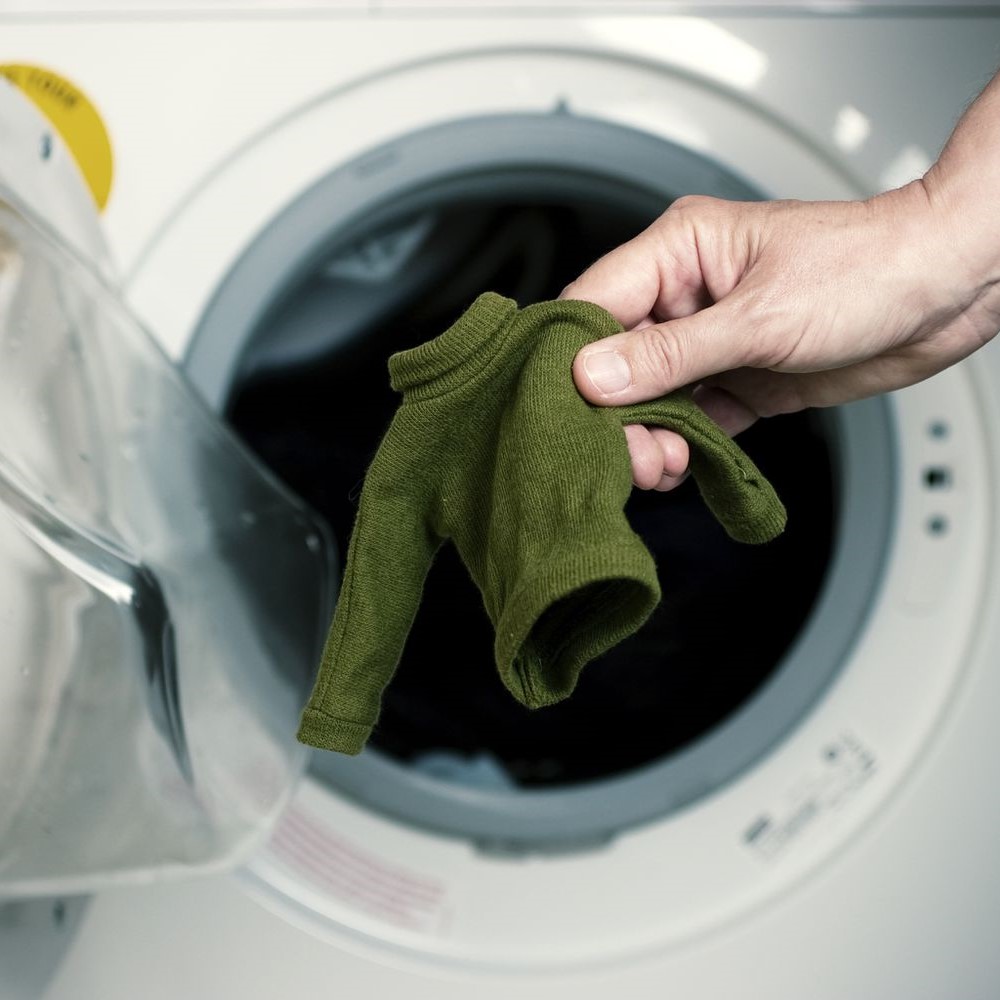Do Clothes Shrink in the Washer or Dryer: Fabric Shrinkage
Clothing maintenance is a common concern for many, especially when it comes to understanding do clothes shrink in the washer or dryer. This question often arises when a favorite garment no longer fits as it once did, leading to frustration and confusion. In this comprehensive guide, we will delve deep into the factors that contribute to clothing shrinkage, explore the roles of both washers and dryers in this process, and provide practical tips to prevent unwanted shrinking. Whether you’re dealing with cotton tees, wool sweaters, or synthetic blends, understanding the dynamics of laundry processes will help you maintain your wardrobe effectively.
The Science Behind Fabric Shrinkage
Understanding Fiber Composition
To grasp why clothes shrink, it’s essential to understand the composition of the fabrics we wear. Natural fibers like cotton, wool, and linen are more susceptible to shrinkage compared to synthetic fibers such as polyester and nylon. This is because natural fibers have a tendency to contract when exposed to heat, moisture, and mechanical agitation during washing and drying processes.
The Role of Heat and Moisture
Heat and moisture play pivotal roles in the shrinking process. When clothes are subjected to high temperatures in the washer or dryer, the fibers expand and then contract as they cool down, leading to a reduction in size. Moisture from washing can also cause fibers to swell and then tighten, further contributing to shrinkage. Understanding how these elements interact with different fabrics is key to preventing unwanted changes in your clothing sizes.
Do Clothes Shrink in the Washer or Dryer?
When pondering the question, “do clothes shrink in the washer or dryer,” it’s crucial to recognize that both appliances can contribute to shrinkage, albeit in different ways. The washer primarily affects clothes through agitation and temperature, while the dryer impacts them through heat and tumbling.
Washer Factors Contributing to Shrinkage
Agitation Intensity
The mechanical agitation in washers can cause fibers to rub against each other, leading to a tightening of the fabric structure. High agitation settings increase the likelihood of shrinkage, especially for delicate fabrics. Opting for gentle cycles can mitigate this effect, preserving the original size and shape of your clothes.
Water Temperature
Hot water accelerates the shrinking process by relaxing and then tightening the fibers more aggressively than cold water. Choosing cold or lukewarm water for washing can significantly reduce the risk of clothes shrinking in the washer or dryer.
Dryer Factors Contributing to Shrinkage
High Heat Settings
Dryers expose clothes to high temperatures, causing fibers to contract sharply. This is one of the primary reasons why clothes often shrink after being dried. Lowering the heat setting or using air-dry options can help maintain the integrity of your garments.
Over-Drying
Extended drying times can exacerbate shrinkage, as prolonged exposure to heat and tumbling continues to tighten the fibers. Monitoring drying times and removing clothes promptly once they are dry can prevent excessive shrinking.
Preventing Clothes from Shrinking
Selecting the Right Wash Cycle
Choosing the appropriate wash cycle is a fundamental step in preventing clothes from shrinking. Delicate or gentle cycles use minimal agitation and lower temperatures, which are less likely to cause fibers to tighten and result in shrinkage.
Opting for Cold Water
As previously mentioned, cold water is gentler on fabrics and significantly reduces the risk of shrinkage. It preserves the color and elasticity of your clothes while maintaining their original size and shape.
Proper Drying Techniques
Air Drying
Air drying is one of the most effective methods to prevent shrinkage. By allowing clothes to dry naturally without the application of heat, you eliminate the primary cause of fiber contraction.
Using Low Heat Settings
If using a dryer is unavoidable, selecting the lowest heat setting available can minimize the risk of clothes shrinking. Additionally, removing clothes from the dryer while they are still slightly damp can prevent over-drying and subsequent shrinkage.
Fabric Care Labels
Always pay attention to the care labels on your clothing. These labels provide vital information on the recommended washing and drying methods specific to each garment, helping you avoid actions that could lead to shrinkage.
Special Considerations for Different Fabrics
Cotton
Cotton is notorious for shrinking, especially when exposed to high heat and agitation. To preserve cotton garments, opt for cold water washes and low heat drying settings. Additionally, avoiding over-drying can help maintain the fabric’s size and shape.
Wool
Wool requires delicate handling to prevent shrinkage. Hand washing with mild detergents and air drying are the best practices for wool garments. Machine washing and drying can cause wool fibers to felt and shrink irreversibly.
Synthetic Fibers
Synthetic fabrics like polyester and nylon are generally more resistant to shrinkage. However, they can still be affected by high heat settings. Using moderate drying temperatures and avoiding prolonged exposure to heat will help maintain their size and structure.
Blended Fabrics
Blended fabrics, which combine natural and synthetic fibers, can present unique challenges. It’s essential to follow the care instructions specific to each blend to prevent uneven shrinking and damage to the garment.
Impact of Improper Washing and Drying
Loss of Fit and Comfort
When clothes shrink, they often lose their intended fit and comfort, making them less wearable. Tightened fibers can cause garments to become restrictive and uncomfortable, detracting from their functionality and aesthetic appeal.
Reduced Longevity
Frequent shrinking can degrade the quality of fabrics over time. The constant contraction and expansion of fibers can lead to wear and tear, reducing the overall lifespan of your clothes.
Increased Wear and Tear
Shrinking can stress the fibers of your garments, leading to premature wear and tear. This can result in issues such as pilling, fading, and loss of shape, diminishing the appearance and durability of your clothing.
Tips for Maintaining the Size and Shape of Your Clothes
Sorting Laundry Appropriately
Sorting clothes by fabric type and washing requirements is a simple yet effective strategy to prevent shrinkage. Separating delicate items from heavy-duty fabrics ensures that each garment is treated according to its specific needs.
Using Gentle Detergents
Harsh detergents can break down fibers and contribute to shrinkage. Using gentle, fabric-specific detergents helps maintain the integrity of your clothes, preserving their size and shape.
Avoiding Overloading the Washer
Overloading the washer can increase agitation and prevent clothes from rinsing properly, both of which contribute to shrinkage. Washing smaller loads allows garments to move freely, reducing the risk of fiber contraction.
Employing Fabric Softeners
Fabric softeners can help relax fibers, minimizing the chances of shrinkage during washing and drying. They also add a layer of protection, keeping clothes soft and reducing friction between fibers.
Common Myths About Clothes Shrinking
Myth: All Clothes Shrink in the Dryer
While it’s true that dryers can cause shrinkage, not all clothes are equally affected. The extent of shrinkage depends on the fabric type, drying temperature, and duration. Natural fibers like cotton and wool are more prone to shrinking, while synthetic fibers are generally more resilient.
Myth: Shrinkage Only Occurs the First Few Washes
Shrinking can occur at any time, not just during the initial washes. Repeated exposure to high heat and agitation can cumulatively cause clothes to shrink over time.
Myth: You Can’t Reverse Shrinkage
While it’s challenging to fully reverse shrinkage, certain techniques like stretching damp clothes gently can help restore some of their original size. However, prevention remains the most effective strategy.
Environmental Considerations in Washing and Drying
Energy Consumption
High heat settings in washers and dryers consume more energy, contributing to higher utility bills and greater environmental impact. By opting for lower temperatures and air drying, you can reduce your energy footprint.
Water Usage
Using cold water for washing not only helps prevent shrinkage but also conserves water, as heating water requires additional resources. Efficient water usage is beneficial for both your wallet and the environment.
Technological Advancements in Laundry Appliances
Modern Washer Features
Today’s washers come equipped with advanced features like temperature control, gentle cycles, and moisture sensors. These innovations allow for more precise control over washing conditions, reducing the risk of clothes shrinking.
Smart Dryers
Smart dryers with programmable settings and automatic shut-off functions help prevent over-drying and excessive heat exposure. These technologies enhance the ability to maintain the size and quality of your clothes.
Fabric-Specific Settings
Many modern appliances offer fabric-specific settings that adjust washing and drying parameters based on the type of fabric. This customization ensures that each garment is treated appropriately, minimizing shrinkage and damage.
DIY Solutions to Restore Shrunken Clothes
Stretching Techniques
For clothes that have already shrunk, gentle stretching while the fabric is damp can help restore some of their original size. Pulling the garment in different directions and allowing it to dry naturally can yield noticeable improvements.
Soaking in Conditioner
Soaking shrunken clothes in a mixture of water and hair conditioner can relax the fibers, making it easier to stretch them back to their original size. Rinse thoroughly and reshape before drying.
Professional Alterations
In cases where DIY methods are insufficient, seeking professional alteration services can help adjust the size and fit of your garments. Tailors can make precise changes to restore the functionality and appearance of your clothes.
The Economics of Shrinking Clothes
Cost of Replacing Garments
Frequent shrinkage can lead to the early replacement of clothes, increasing your overall wardrobe expenses. Investing in quality fabrics and proper laundry techniques can extend the lifespan of your garments, saving money in the long run.
Energy Bills
Using high heat settings for washing and drying not only risks shrinking clothes but also elevates energy consumption. By adopting energy-efficient laundry practices, you can reduce utility costs while maintaining your clothes’ integrity.
Value of Professional Services
While professional repairs and alterations incur additional costs, they can preserve valuable or sentimental garments that would otherwise need to be replaced. Balancing DIY methods with professional services ensures that your wardrobe remains both functional and cost-effective.
Cultural Perspectives on Clothing Care
Historical Laundry Practices
Historically, laundry practices were labor-intensive and lacked the technological advancements of today. Understanding these practices highlights the importance of modern techniques that help prevent clothes from shrinking and extending their lifespan.
Modern Trends in Fashion and Sustainability
Today’s fashion industry emphasizes sustainability, encouraging consumers to adopt laundry practices that minimize environmental impact and preserve garment quality. Preventing shrinkage aligns with these trends, promoting responsible clothing care.
Global Variations in Laundry Habits
Different cultures have unique approaches to laundry, influenced by climate, available technology, and traditional practices. Exploring these variations can provide insights into effective methods for preventing clothes from shrinking in diverse settings.
Psychological Impact of Clothing Shrinkage
Emotional Attachment to Garments
Clothing often carries emotional significance, and shrinkage can lead to feelings of frustration and disappointment. Maintaining the size and quality of your clothes helps preserve their sentimental value.
Stress of Unexpected Laundry Outcomes
Unexpected changes in clothing size can disrupt daily routines and require additional time and effort to address. Adopting preventive measures reduces stress associated with laundry mishaps.
Confidence and Appearance
Properly fitting clothes contribute to personal confidence and self-esteem. Ensuring that garments maintain their intended size and shape supports a positive self-image and professional appearance.
Future Directions in Preventing Shrinkage
Innovations in Fabric Technology
Advancements in fabric technology are leading to the creation of shrink-resistant materials. These innovations promise greater durability and easier maintenance, reducing the likelihood of clothes shrinking in the washer or dryer.
Enhanced Appliance Features
Future washers and dryers may incorporate even more sophisticated features, such as advanced sensors and AI-driven settings, to optimize laundry processes and prevent shrinkage automatically.
Personalized Laundry Solutions
Personalized laundry solutions tailored to individual garment needs could become more prevalent, allowing consumers to maintain their clothes with greater precision and care.
 Conclusion
Conclusion
In conclusion, understanding do clothes shrink in the washer or dryer is essential for effective clothing maintenance. Both washers and dryers play significant roles in the shrinkage process, but with the right techniques and knowledge, you can prevent unwanted changes in your wardrobe. By selecting appropriate wash cycles, using cold water, opting for gentle drying methods, and paying attention to fabric care labels, you can preserve the size and shape of your clothes. Additionally, being aware of the specific needs of different fabrics and utilizing modern appliance features will further enhance your ability to maintain your garments effectively. Remember, prevention is always better than dealing with the consequences of shrinkage. By implementing these strategies, you can ensure that your clothes remain comfortable, stylish, and long-lasting, ultimately saving you time, money, and frustration.





